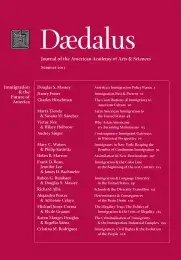Contemporary Immigrant Gateways in Historical Perspective
This article focuses on settlement trends of immigrants during the periods that bookend the twentieth century, both eras of mass migration. It compares settlement patterns in both periods, describing old and new gateways, the growth of the immigrant population, and geographic concentration and dispersion. Historically, immigrants have been highly concentrated in a few places. Between 1930 and 1990, more than half of all immigrants lived in just five metropolitan areas. Since then, the share of these few destinations has declined, as immigrants have made their way to new metro areas, particularly in the South and West. During the same period, immigrants began to choose the suburbs over cities, following the decentralization of jobs and the movement of opportunities to suburban areas. There are now more immigrants in U.S. suburban areas than cities.
New immigrant settlement trends have reshaped communities across the United States. The history of immigrant urban enclaves has been fundamentally altered by the post–World War II restructuring of the U.S. economy, the decentralization of cities, and the growth of suburbs as major employment centers. The contemporary immigration “map” has multiple implications for the social, economic, civic, and political integration of immigrants.
Similar transformative processes also characterized the turn of the twentieth century, when the United States was shifting from an agrarian to an industrial economy, inducing both an exodus from rural areas to cities and mass immigration, mainly from Europe. At that time, immigrants significantly altered neighborhoods in burgeoning cities, some of which are still defined by the immigrants who settled there during that period.
Today, these processes are taking place in new geographies and through different industrial transitions. During both periods, the content and the location of working life changed. At the turn of the . . .
